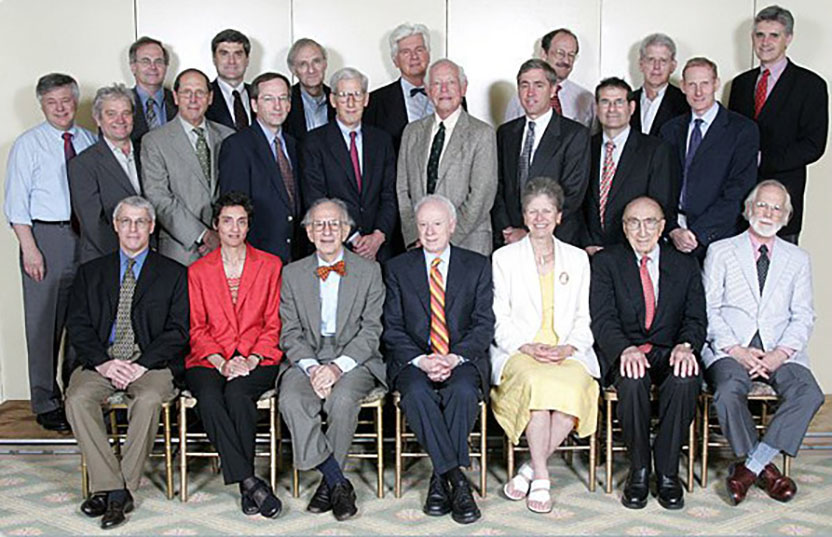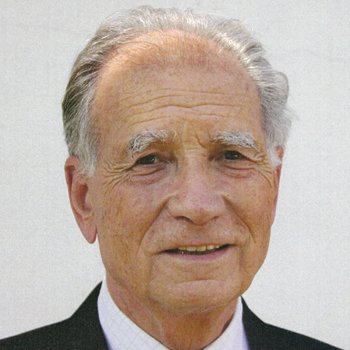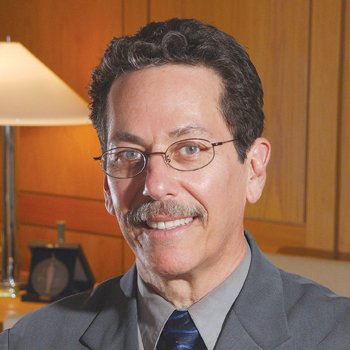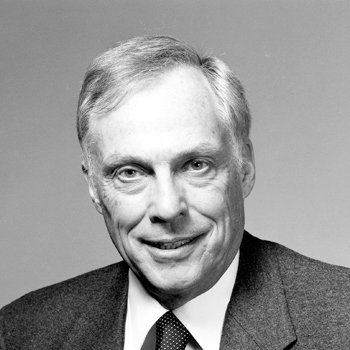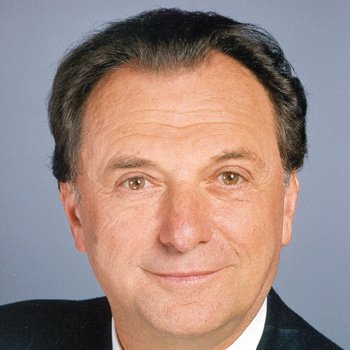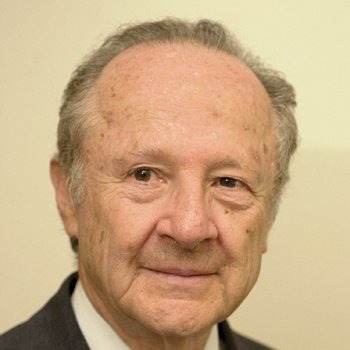Given this relentless rise in scientific knowledge, how does a group of ordinary mortals, like the 24 members of the Lasker Jury, evaluate and rank the hundreds of different discoveries made over the last several decades? I’ve wrestled with this question for the last 10 years and could never come up with a satisfying answer until several months ago when I went to the Roof Garden at the Metropolitan Museum of Art. Let me explain.
Each summer, the Metropolitan Museum invites a different artist to exhibit his or her work on the Roof Garden that overlooks Central Park. This year’s installation is by the British sculptor, Andy Goldsworthy. Goldsworthy is noteworthy and newsworthy for his monumental environmental sculptures made of stone and wood.
Inspired by the architectural backdrop of Central Park, Goldsworthy has created a 14-foot tower of 17 balanced stones — one stone stacked on top of another in a tapered pyramidal fashion. There’s a picture of Goldsworthy’s tower on page 2 of your Nature Medicine booklet. As you look at the Stone Tower from bottom to top, each successive stone becomes smaller and smaller. The bottom stone is gigantic; it weighs 1.5 tons and is 5 feet wide and 3 feet tall. The 17th stone at the top is teeny; it weighs only 2 ounces and is the size of a silver dollar. The bottom stone is 20,000 times heavier than the top stone. To most viewers, this tapering tower of stones symbolizes a Manhattan skyscraper. To me, the tower of Goldsworthy reveals how we decide which scientific discoveries are true milestones and prizeworthy of being etched in Lasker stone.
There are two ways to view Goldsworthy’s stone tower — from bottom to top or from top to bottom. Scientific discoveries can be viewed in the same two ways. A typical bottom-up discovery is the type that you read about every week in The New York Times and USA Today: Dr. X identifies a gene that will soon lead to a cure for cancer or schizophrenia. This bottom-up type of discovery starts out like the bottom stone in Goldsworthy’s tower—with huge impact and tons of media coverage. But other scientists soon find that Dr. X’s bottom stone is not a stepping-stone to new concepts, and with the passage of time its impact diminishes like the stones of Goldsworthy’s tower, viewed bottom to top.
The second type of discovery — the top-down type — is extraordinarily difficult to spot early on. That’s because it starts out like the teeny stone at the top of the Goldsworthy tower — with little or no impact and not an ounce of media coverage. Other scientists soon find that the stone at the top is the stepping-stone that unturns a new field of science. With the passage of time, as more and more scientists extend the initial discovery, its impact becomes even larger like the stones of Goldsworthy’s tower, viewed top to bottom. Since top-down discoveries arise out of the blue, they are discoveries in the true sense of the word, and it often takes decades for their full biological and medical importance to be appreciated — even by savvy journalists like Larry Altman and Bob Bazell.
Two of the most intensely studied mechanisms of cell signaling, protein phosphorylation and protein ubiquitination, are classic examples of top-down discoveries that began in a modest way with virtually no impact and no media attention. Thirty-four years passed from the time of phosphorylation’s discovery in 1957 to the award of a Lasker Prize in 1991 and 37 years until the award of the Nobel Prize in 1994. After ubiquitination was discovered in 1968, 22 years passed before the Lasker Prize was awarded in 2000, and it’s still waiting for Nobel recognition. Like the awards for phosphorylation and ubiquitination, the 2004 Lasker Awards in Basic and Clinical Medical Research celebrate towering achievements that epitomize the top-down approach to scientific discovery.
The Lasker Basic Medical Science Award will be presented by Michael Brown, who is the Regental Professor at The University of Texas Southwestern Medical Center in Dallas. Mike is a former recipient of the Lasker Basic Award and Nobel Prize and is a perennial presenter at this event. Mike and I have been conjoined in a scientific duopoly for 32 years, still struggling to solve the mysteries of cholesterol.
After Mike presents the Basic Award, I will present the Lasker Clinical Medical Award. This will be followed by the presentation of the Lasker Special Achievement Award by Tom Maniatis, who is the Thomas H. Lee Professor of Molecular and Cellular Biology of Harvard University in Cambridge. In 1982, Tom wrote a laboratory manual that taught the world how to clone genes, and the name “Maniatis” rapidly became a household word in the lingua franca of biomedical scientists. The “Maniatis Manual,” now in its third edition, has sold more than 250,000 copies and has become the Bible that graduate students read religiously. I dare say that in the last two decades many, many more scientists have studied the gospel of St. Maniatis than the Gospel of St. Matthew.
And now let’s begin with St. Michael, who will tell us about the Lasker Basic Award.
More Jury Chair Essays
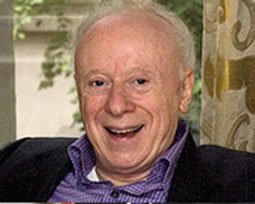 Here is a mind-boggling statistic that I hope will not spoil your post-prandial bliss. During the last 20 minutes while you were enjoying your lunch, 20 new papers entered the world’s biomedical literature — that’s one paper per minute. Last year, 500,000 new articles were published in 4000 journals. Even if only one out of 1000 of last year’s 500,000 articles contain novel information that ultimately proves useful, we are still left with 500 potentially important papers published each year, any one of which could contain the first hint of a great scientific discovery. We are clearly immersed in a glut of indigestible information.
Here is a mind-boggling statistic that I hope will not spoil your post-prandial bliss. During the last 20 minutes while you were enjoying your lunch, 20 new papers entered the world’s biomedical literature — that’s one paper per minute. Last year, 500,000 new articles were published in 4000 journals. Even if only one out of 1000 of last year’s 500,000 articles contain novel information that ultimately proves useful, we are still left with 500 potentially important papers published each year, any one of which could contain the first hint of a great scientific discovery. We are clearly immersed in a glut of indigestible information.